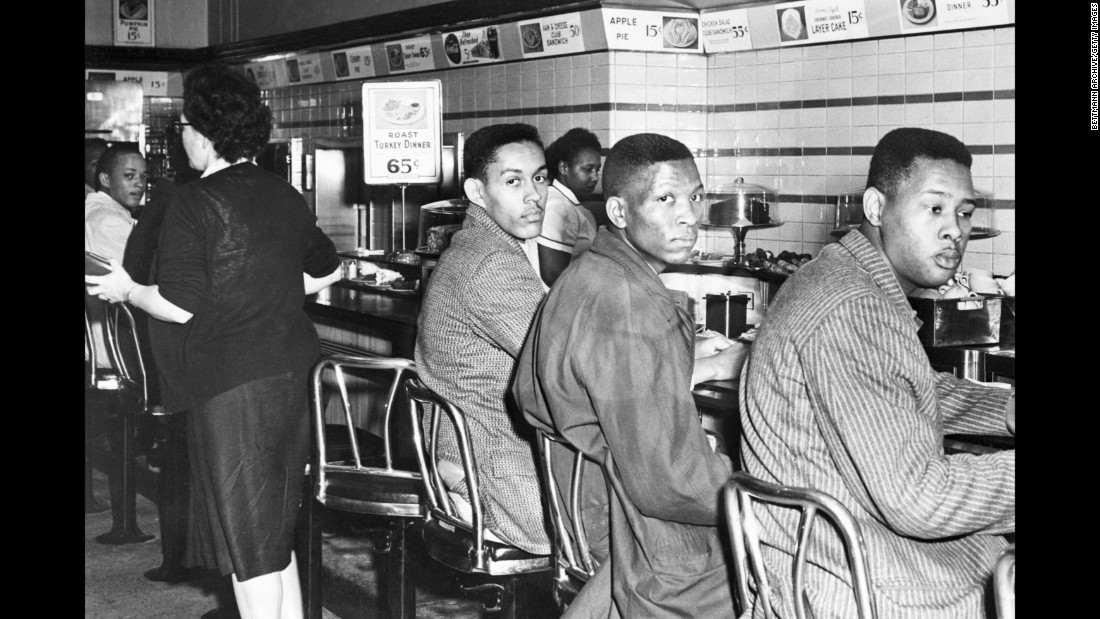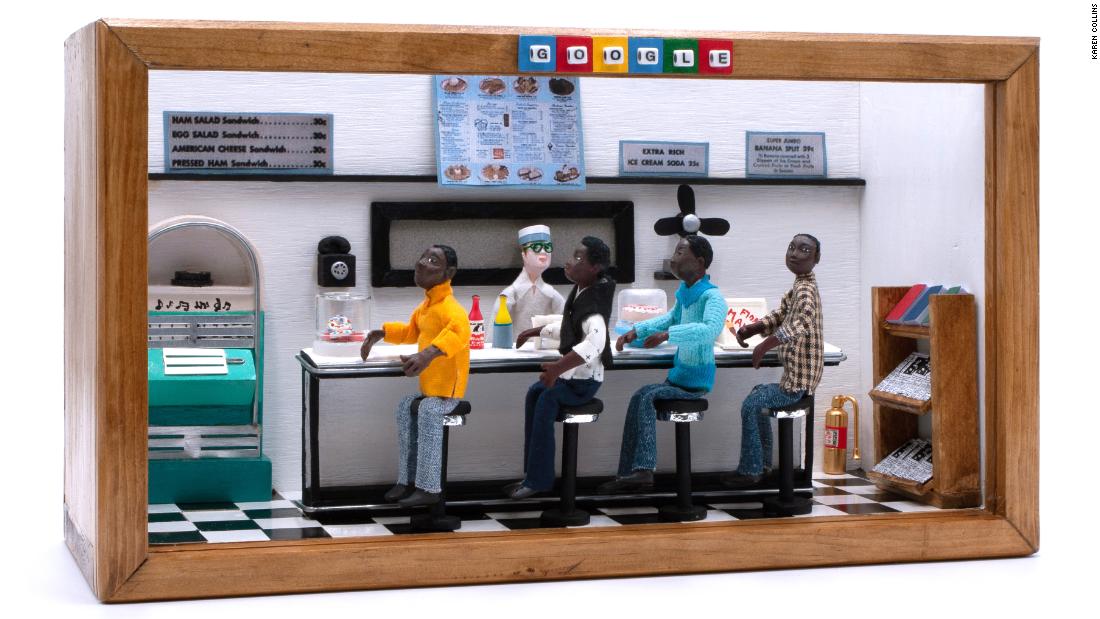It was in the late afternoon of Monday, February 1, 1960, when four young black men entered the F. W. Woolworth store in Greensboro, North Carolina.
Joseph McNeil, Franklin McCain, David Richmond and Jibreel Khazan, who would become known as the Greensboro Four, were students from North Carolina Agricultural and Technical College.
The four college students entered the Woolworth store shopping area that was open to everyone to buy a few items they needed.
They didn’t end there; they decided to move to the dining area of the store that barred black people from taking a seat.
They were aware that moving towards that whites-only lunch counter could get them arrested, beaten or even killed but they pressed on in silence and sat at the lunch counter.
/https://public-media.si-cdn.com/filer/16/06/16063c51-b65d-4769-819e-b24ad1e18175/woolworth-four-19601.jpg)
The four young men ordered coffee but were refused. Instead, a white waiter asked them to go to the “stand-up counter” and take their order and leave, as was the policy for black customers.
The young men brought out receipts of the items they had bought at the store’s shopping area, and asked to be served.
“You do serve us here, you’ve served us already, and we can prove it. We’ve got receipts. We bought all these things here and we just want to be served,” one of the four, McCain later remembered saying.
But the employees still refused to serve them. Even when a black employee and the manager of the store asked the four students to think twice about their actions before getting into trouble, they didn’t budge. They remained quietly in their seats at the lunch counter and waited.
A police officer arrived, with a Billy club in his hand. He began pacing back and forth behind the four students who continued to remain quiet in their seats. Their nonviolent approach towards their activism made it difficult for the police officer to take any further action, so he left.
Bringing almost everything to a standstill, soon, the store announced that it would be closing early and the young men got up to leave.
The next day, they came back and waited all over again, and within three days, over 300 students joined the young men in their protest against segregation.
“The action of the Greensboro Four on February 1 was an incredible act of courage, but it wasn’t unique. There had been previous sit-ins. In 1957, for instance, seven African Americans staged one at the segregated Royal Ice Cream Parlor in Durham, North Carolina. What made Greensboro different was how it grew from a courageous moment to a revolutionary movement,” writes Smithsonian.
Essentially, the young men’s sit-in movement swept the Jim Crow South as within weeks, it spread to 55 cities in 13 states, making them icons in America’s civil rights history.

In subsequent months, students from black colleges across the South would hold similar protests at various public places, including libraries, department stores, lunch counters, among others that denied service to blacks, according to Mississippi Encyclopedia.
“To me, it was one of the turning points in history,” said Clayborne Carson, director of Stanford University’s Martin Luther King Jr. Institute. “That’s just as remarkable as Rosa Parks refusing to give up her seat. It’s an example of how movements are often started by people dealing with problems right in front of them.”
During the height of the Civil Rights Movement in the 1950s and 60s, almost every downtown in the southern part of the country, including places like Los Angeles and Chicago, were segregated.
Policies were hostile to black people; blacks could not sit at lunch counters, public libraries, among others. Jobs were also limited for black people; those who were employed were basically doing menial jobs.
It took almost six months for Woolworth to finally desegregate its lunch counter after the sit-in and four years for segregation to become illegal. Yet, the action of the Greensboro Four produced some immediate results.

In weeks, their sit-in and others that followed brought forth the start of the Student Nonviolent Coordinating Committee in Raleigh, North Carolina, which largely influenced the civil rights movement throughout the South.
John Lewis, who became the Committee’s chairman, organized the 1963 March on Washington where thousands of people gathered at the Lincoln Memorial and heard Dr. Martin Luther King Jr. deliver his “I Have a Dream” speech.
Today, 60 years after the Greensboro sit-in, the four students are commemorated in a 15-foot bronze statue on the campus of the North Carolina Agricultural and Technical College.

A portion of Greensboro’s once whites-only lunch counter is also at the Smithsonian National Museum of American History while two new documentaries about the 1960 incident have been produced.
With February being Black History Month, Google, last Saturday, resumed the month with a doodle that commemorates the 60th anniversary of the Greensboro sit-ins.

This doodle, which is a photo of a diorama that depicts the sit-in of the “Greensboro Four”, comes from the founder of the African American Miniature Museum, Karen Collins.
The Compton-based artist wrote in a blog post on Saturday: “Today’s Doodle diorama not only pays homage to the sit-in, but also to everything that came as a result: changes in our country to make it more possible for ALL Americans—no matter their race, color, or creed—to live to their full potential.”










